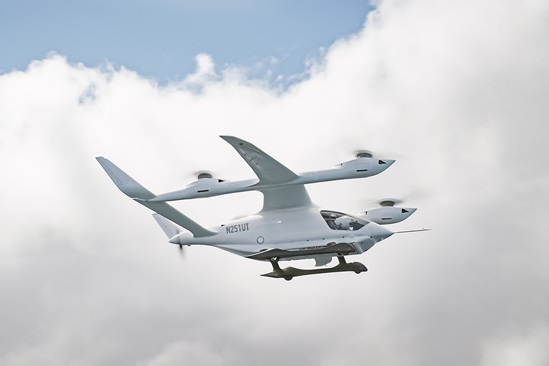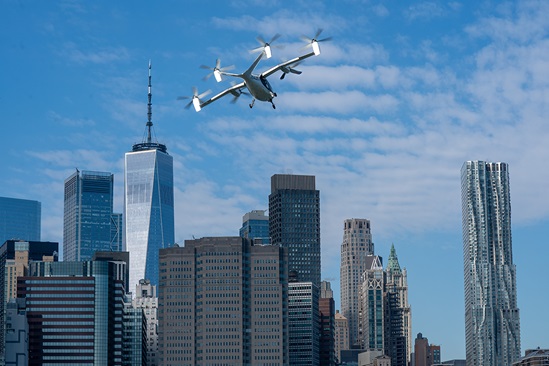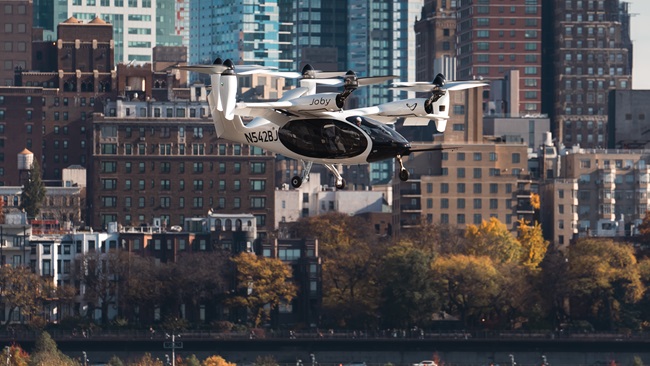Maximizing mobility
New report adds perspective to emerging technologies
Given the emerging technologies related to moving people and products, it feels as if the world is morphing from the information age to the mobility age.
Advances in the information age allowed information to be quickly moved around the globe. With pending advances in mobility in the air, on land, on water, and in space, the mobility age will see a similar lowering of barriers in moving material things.
Founded in part by young entrepreneurs Ben Marcus and Cyrus Sigari, UP.Partners oversees a development lab for mobility projects, runs a venture capital firm to invest in such projects, and hosts the annual UP Summit to showcase and highlight entrepreneurs and their emerging mobility technologies.
The new report focuses on what is happening across all modes of mobility and, at least as important, also points out the challenges facing companies attempting to succeed in that space. Or, as UP.Partners likes to see it, points out the opportunities available to such companies.
“From electric and autonomous vehicles, to EVTOLs, hypersonic travel, space exploration, and many more groundbreaking ideas, unlocking the next wave of opportunities will require disruptive innovation…. A great number of challenges lie ahead—we like to think of them as opportunities,” the report declares in its introduction.
Unlike moving electrons in the information age, moving stuff in the mobility age requires propulsion. That propulsion and an ever-greater demand for mobility leads to an ever-increasing amount of carbon dioxide emissions, which leads to ever-greater environmental concerns and the threat of greater regulation. “It’s clear that innovation in the mobility sector to reduce its environmental footprint is no longer an option but a necessity,” the report notes. However, “History has shown, as you increase a community’s access to mobility, quality of life increases in tandem.”
Seeing the possibilities, venture capital companies have poured $375 billion into mobility tech startups since 2013. Fueled by a roaring economy and cheap money, great progress was made across numerous sectors, pioneered by the ride-hailing industry a decade ago. However, the market correction of 2022 had a dramatic impact on funding and the stock prices of companies that went public during that time. Those companies that went public via special public acquisition companies (SPACs) in the aviation space were particularly hard hit. As the report notes, more than half of the 10 most prominent air-taxi startups announced SPAC mergers in 2020 and 2021. “This speculative bubble ultimately burst and drew down company valuations despite no change in underlying business fundamentals,” according to the report.
For example, the report shows that stock price performance for Joby Aviation, which went through a SPAC merger in 2021, declined 44 percent in 2022. Other companies that went through similar mergers saw even greater declines: Ehang was down 52 percent, Archer Aviation 54 percent, Vertical Aerospace 61 percent, and Lilium 82 percent. This despite “positive momentum in terms of prototype development and a rising number of test flights.”
The report continues, “It remains uncertain if they can survive this recessionary period, which could extend beyond expectation.” As of mid-2022, the top 10 companies in the eVTOL space had garnered nearly 6,400 orders.
eVTOL development is just one of numerous disruptions occurring in the aviation market. Others include development of hydrogen and electrically powered aircraft, autonomous flight, sustainable aviation fuels (SAF), and cargo drones.
While so many other aviation disruptors are in the early stages of development, the cargo drone market is growing quickly. The report notes that the number of commercial cargo deliveries by drones rose to 1.4 million in 2022, up from just 6,000 in 2018. While still years away, the report predicts that ultimately commercial cargo and passenger flights will be autonomous, in part because of the current and ongoing pilot shortage. “Research from Oliver Wyman estimates that the airline industry lacks 18,000 pilots in 2023, a delta that will expand to 65,000 by 2030.”
In an interview February 6, Sigari, who is also a pilot, noted that the pilot shortage is reaching a crisis situation that could become a constraint on progress. “This can become the beginning of a drumbeat of a national emergency,” he said, suggesting that the White House and Congress need to start taking steps to support the creation of more pilots.
Sigari was encouraged by the Inflation Reduction Act signed into law in August 2022, which calls for the investment of nearly $370 billion to address climate change. Of that, about $130 billion relates to industries or technologies that directly impact mobility efforts: batteries and renewables, clean transportation, and hydrogen.
The report acknowledges that it is not yet clear which technologies will provide the best path forward for aviation. “Air taxis, in particular, have attracted tons of commercial interest thus far, although real-world applications remain highly speculative.”
As it relates to climate change, electric aviation is still “many years away. Until then aviation’s cleaner future will depend on SAF, which is barely in use today—representing less than 1 [percent] of global jet fuel consumption in 2022.”
The report concludes with three “mega trends” that may transform the future of mobility: battery recycling, hypersonic travel, and the lunar economy.
Sigari said the report started out as an internal exercise to help his organization know where to invest capital. However, company officials concluded that it is better shared to help entrepreneurs, academics, investors, and others understand trends. He hopes that socializing the report will also cause people to offer up countervailing points of view—all of which can lead to innovation and better reporting. He expects that it will be an annual effort. A complete copy of the report can be found online.



